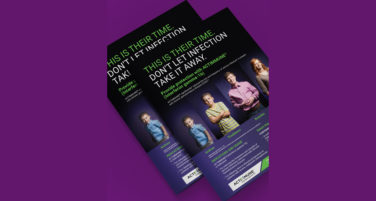This isn’t the first time Samantha has missed school. She spent most of her junior year in and out of the hospital with severe adnominal pain, back pain, and episodes of acute pancreatitis. Her family practitioner tried treating the abdominal pain, but it came back. Each episode disrupted her education and life. Multiple providers were added to her care team. After years of tests, they couldn’t find the cause of her extremely high triglycerides and standard treatments weren’t helping. She started seeing a nutritionist who put her on a very low-fat diet, but she still didn’t have a diagnosis. In rare disease, this patient story is not uncommon. Patients typically go seven years without a diagnosis, seeing eight different physicians with three or more misdiagnoses.
Advancements in marketing technology can help patients like Samantha and her providers make informed decisions about her care. Today, we can use AI and machine learning to shorten the time to diagnosis and bring awareness of necessary treatment options—and fundamentally shift the experience for patients like Samantha.
This is Not a Fad
AI is transforming the pharma marketing industry at an incredible rate. According to Fortune magazine, the global venture capital investment in AI drug discovery reached over $575 million in 2019; by 2023, the overall investment in artificial general intelligence is expected to reach $50 billion. This isn’t a fad; artificial general intelligence and its family of languages (machine learning, natural language processing, and deep learning) are already having a profound effect on how we approach marketing. A well-planned AI system can monitor the behavior of its users, learn what that specific user is doing, and serve them personalized messages via multiple channels. AI can then become smart enough to predict future behavior.
Many patients like Samantha go online for their information. She and her parents went to Google to learn more about her disease and came across a carefully placed, strategically crafted SEM ad, written and served to her by AI. That ad was created based on the clicks of the patients who came before her and on harvested online behaviors. Using patterns in content and traffic, we can predict what will be most valuable to patients—and serve it to them.
Shaping Patient Disease Knowledge
While visiting the disease education site, Samantha signed up for more information. She was segmented into an email stream based on a marketing automation system powered by AI. Samantha then received dynamic, personalized messages which shaped her knowledge of the disease and gave her the confidence to talk to her care team. After years of tests and failed treatments, she was finally diagnosed with familial chylomicronemia syndrome (FCS). This rare disease affects 1:1 million people and is often misdiagnosed.
Often in rare disease, symptom patterns are what lead to a diagnosis. Samantha’s multidisciplinary care team started researching online as well. To reach these doctors, marketers can use AI to release a precise, hyper-targeted campaign to bring disease and diagnosis education straight to the devices of Samantha’s providers. AI can also discover hidden patterns in healthcare system data to find the exact providers who are suspecting, diagnosing, and treating patients with FCS.
Using the insights generated from various data sources with applied AI methodologies, we can build dynamic touchpoints across all channels in both sales and marketing, personal and nonpersonal, and customize specific messages to each of the physicians seeing patients with FCS. The AI in the ad-serving platform monitors what creative is generating the most clicks and optimizes the media plan in real time, maximizing efficiency and spend. This content will ultimately give providers the knowledge they need when patients like Samantha come into their practice seeking help.
Currently, the only treatment for FCS is an incredibly strict diet. A symptom and diet tracker application, powered by AI, can predict any dietary changes and provide Samantha with push notifications to keep her on track. This application can also message her care team. Chatbots using AI provide support to Samantha at the moment of need by aggregating responses and uncovering patterns in language to navigate her to a call center nurse or an on-call provider via telemedicine.
Combining multiple data sources with AI along the patient journey and the entire marketing ecosystem allows us to support patients and their care teams in exciting new ways. Data mining, analyses, and predictive modeling help us deliver dynamic messages, shorten the time to diagnosis, and improve patient outcomes.
So, where do you start? First, find the right partner. Create a long-term plan, but start small and build from there. Setting clear objectives with your internal stakeholders and your partners are the keys to success. Don’t delay—patients like Samantha are waiting for a better experience.
Note: Samantha is not an actual patient.









